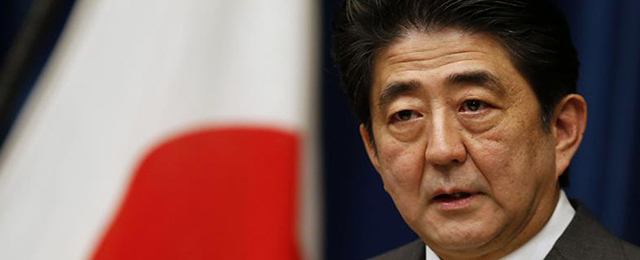Shinzo Abe’s second term as prime minister of Japan, unlike his first, was a modest success. But he will have to bring about tangible outcomes for Japan and the economy if it is to succeed the third time around.
After Abe’s snap election on December 14, the rising star of the Liberal Democratic Party (LDP), Shinjiro Koizumi, accurately characterized the poll as “the election with no enthusiasm, an overwhelming victory with no fanaticism.” Voter turnout was a record low, at 52.8 percent. Voters had no real choice in electing a new government or in selecting alternative economic policy. The Democratic Party of Japan (DPJ) failed to present itself as a responsible, reliable alternative to the LDP. From the beginning, the election was destined to be a vote of confidence in Abe.
The election was a good result for Abe, but it still left a bitter taste. The good news was that the government coalition of the LDP and the Komeito party kept its two-thirds majority in the lower house, which means that it will continue to control the Diet. Abe is also the first Japanese prime minister to win two landslide victories in a row since the introduction of electoral law reforms in 1994.
The bad news for him was the retreat of the nationalist cluster and the rise of the liberals. The LDP lost four seats, while Komeito, its more liberal coalition partner, gained four. The LDP will be dependent on Komeito’s cooperation in 2015 and 2016, when there will be nationwide local elections and an upper house election, respectively. Behind the landslide victory of the coalition government, the nationalist Party for Future Generations was almost wiped out. Meanwhile, the Communist Party was the greatest beneficiary, increasing the number of its seats from 8 to 21. The DPJ, despite leader Banri Kaieda losing his seat, also increased its count by 11.
Abe’s second term revealed amazing pragmatism in comparison with his first (2006–2007). He adopted two faces: a nationalist one at home (even more so on social networking services) and an internationalist one abroad, and with some success. At home, Abe visited Yasukuni Shrine and showed his unwillingness to compromise with China and South Korea over historical issues, although he insisted that the door for dialogue is always open. Abe also introduced the Act on the Protection of Specially Designated Secrets. As an internationalist, Abe 2.0 raised expectations for Japan’s economic recovery. He met 121 state leaders around the world a total of 246 times, and visited 50 countries, making various commitments to economic cooperation. He also advocated concluding the Trans-Pacific Partnership (TPP), strengthening the U.S.-Japan alliance and seeking a greater role in regional security. He impressed upon the world that Japan is back and that he himself was back. Then, without compromise, Abe eventually met with the leaders of China and South Korea – even though these meetings were more symbolic than substantial.
Abe 2.0 was modest, cautiously getting things moving. He avoided contentious issues that would have required him to mobilize extensive political capital. For example, Abe quickly took a fall-back position on the amendment of the Constitution when he realized that it would not garner public support. Instead he moved toward reinterpreting the constitution to allow collective self-defense as a relatively minor change. He was also cautious in handling the restarting of Japan’s nuclear power plants, which were shut down after the Fukushima disaster. The government’s position on nuclear energy is to maintain it as base-load energy. But Abe did not push this, and did not mobilize political capital to accelerate the process.
So what is the Abe cabinet likely to deliver in 2015?
Abenomics and Futenma Marine Corps Air Base relocation pose serious challenges to Abe this year. These issues will require him to take more political risks and mobilize more political capital. His leadership needs a new mode third time round, and it will have to deliver tangible results beyond past expectations: consolidating economic growth and reaffirming Japan’s commitment to the U.S. alliance and international security. Abe will have to revise security guidelines and enact national security laws for collective self-defense.
Abe must find a solution to the Futenma problem in Okinawa. His LDP was defeated in all four districts in Okinawa because of the base relocation issue. Frustration among the people in Okinawa is mounting. Abe must devote himself to closing the widening gap between Tokyo and Okinawa. Failing to address the issue may undermine confidence in Abe’s commitment to the alliance.
The 70th anniversary of the end of World War II will also pose a big challenge for Abe in 2015. It will require him to reconcile and balance strong domestic pressures from his nationalist political supporters with international expectations. The anniversary statement will require much from Abe, both in terms of his ability to handle the issue with care and balance, and also in terms of expending his political capital.
Abe’s success in 2015 will be measured by his actions, far more so than his words and far more so than in the past. Actions will be the measure of Abe third term success.
Nobumasa Akiyama is professor at the Graduate Law School and the School of International and Public Policy, Hitotsubashi University
This article is part of an East Asia Forum special feature series on 2014 in review and the year ahead. It is reprinted here with the EAF’s permission






Be the first to comment on "What now for Abe third time around?"